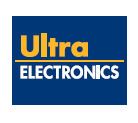Type Public (LSE: ULE) Area served Worldwide Revenue 726.3 million GBP (2015) | Founded 1920 Headquarters Middlesex, United Kingdom CEO Rakesh Sharma (Apr 2011–) | |
 | ||
Key people Douglas Caster, ChairmanRakesh Sharma Chief Executive Products C4ISTARCyber securitySonar systemsCivil transport and energy systems and equipmentEquipment for defence and security applicationsMilitary aircraft equipmentCivil aircraft equipmentIce ProtectionAirport systems Stock price ULE (LON) 2,121.00 GBX +11.00 (+0.52%)30 Mar, 4:59 PM GMT+1 - Disclaimer Subsidiaries Ultra Electronics GigaSat, Videcom international Profiles | ||
Ultra Electronics Holdings (LSE: ULE) is a British company serving the defence, security, transport and energy industries. It is listed on the London Stock Exchange and is a constituent of the FTSE 250 Index.
Contents
- Ultra electronics makes a bet on electronic warfare while playtech arms itself with cfd broker
- History
- Operations
- References
Ultra electronics makes a bet on electronic warfare while playtech arms itself with cfd broker
History
The Company was started by Teddy Rosen in 1920 as Edward E. Rosen & Co. manufacturing high quality headphones. In 1923 the company moved to new premises at Harrow Road, London and in 1925 a new company Ultra Electric Ltd. was formed. Ultra introduced its first mains powered wireless set in 1931. After further expansion the company moved to larger premises at Erskine Road, Chalk Farm, NW3 in 1932 and also built a new 150,000 sq ft (14,000 m2) factory at Western Avenue, Acton, W3 in 1935. Ultra manufactured a wide range of domestic radio receivers including the Blue Fox, Lynx, Panther and Tiger models. In 1939 Ultra presented a television receiver to the market for the BBC High Definition Television Service which was transmitted on 405 lines from the studios at Alexandra Palace, north London.
During World War II the company diversified into building tails and bomb doors for the Short Stirling aircraft.
Ultra opened a new factory at Gosport for the production of televisions and radios in 1956 and acquired Pilot Radio & Television in 1959, before splitting into two divisions, one dealing with domestic radio and television and the other with electronic products, in 1960. In 1961 Ultra's consumer electronics interests became part of Thorn Electrical Industries, who continued to manufacture products using the Ultra brandname until 1974. The remainder of the company became Ultra Electronics Ltd. - producing among other products the "Jezebel" and "Mini-Jezebel" sonobuoys - which was bought by the Dowty Group in 1977.
In 1993 Ultra was the subject of a management buyout led by Julian Blogh of seven Dowty Group plc companies which formed the Dowty Group Electronic Systems Divisions, which had been acquired by TI Group in 1992. The company floated on the London Stock Exchange in 1996.
Operations
The company operates its portfolio as an umbrella of specialist businesses designing, manufacturing and supporting electronic and electromechanical systems, sub-systems and products for defence, security, transport and energy applications worldwide. It employs over 4,500 people. The head office is located in Greenford, Middlesex, UK.
Ultra comprises 23 businesses, with approximately half in the UK and half in the United States and Canada. It also has offices in Singapore and the UAE and has recently established (2007) the Ultra Electronics Pty Ltd subsidiary based in Adelaide Australia. Ultra has also formed joint ventures with local firms in the UAE, Qatar and China in recent years.
The company is structured around three divisions: Aerospace & Infrastructure, Communications & Security and Maritime & Land.
